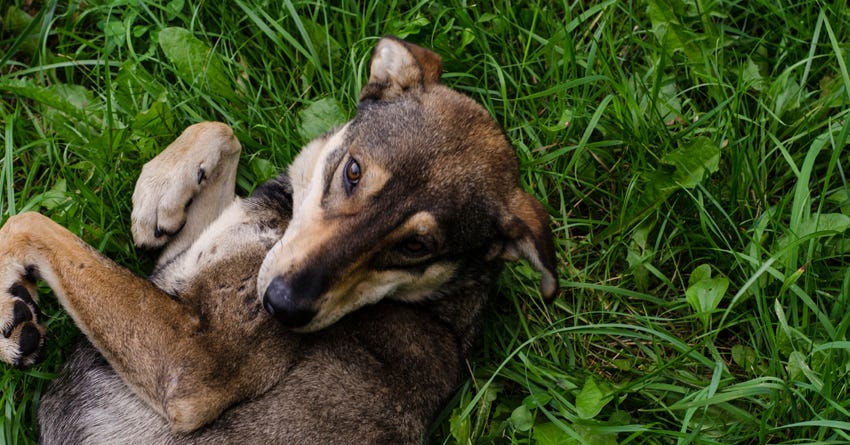There’s a quick diagnostic trick for checking to see if your dog is yeasty: smell him. If he smells like corn chips and he’s itchy, there’s a good chance he has an overgrowth of yeast. It could be on his ears, paws, armpits, all of the above or somewhere else.
While there are certainly things you can do to help resolve it, a yeast overgrowth problem is usually a sign of an imbalance in the body due to some underlying condition or issue like allergies, antibiotic overuse, immune system dysfunction, etc. So that will definitely need to be addressed as well. But you can start dealing with the yeast at hand with these 6 tips.
1. Say No To Sugar
There’s one simple rule about yeast that will go a long way to keeping it in check: sugar feeds yeast. You’ll want to go through your dog’s diet and remove all the sugar and high carb content from what your dog’s eating. That includes things like honey, molasses and plain sugar, but also white potato and sweet potato. “If your dog has a significant yeast problem, I recommend you go entirely sugar-free,” said Dr. Karen Becker in her blog. “Feed low-glycemic veggies. Eliminate potatoes, corn, wheat, rice—all the carbohydrates need to go away in a sugar-free diet.” The Honest Kitchen's Limited Ingredient Fish Recipe falls into this category of minimalist food for dogs at all life stages.
2. Use Natural Rinses to Fight Yeast Infections on the Skin
Since the yeast problem often presents itself on the skin, natural topical rinses, sprays and shampoos can help. Becker recommends bathing your dog with a natural anti-fungal shampoo containing tea tree oil or other anti-yeast herbs (avoid oatmeal because it’s a carb) at least once a week. You can try her recipe of one cup of vinegar or one cup of lemon juice mixed into a gallon of water, then used as an after-bath rinse or sprayed on during the day (spot test it first to make sure it doesn’t sting irritated skin). Note that lemon juice can lighten fur, so you might want to use the vinegar mix for darker coated dogs.
3. Use Natural Yeast Fighters
Adding a few natural anti-fungals into your anti-yeast arsenal will also go a long way. Try organic coconut oil, raw organic apple cider vinegar and/or oregano oil. Coconut oil can be added to your dog’s food and also applied topically to yeasty skin. Apple cider vinegar can also be given internally in food or water and applied externally as part of a rinse. Oregano oil applied with cotton rounds can be particularly helpful for soothing yeasty ears, but can also be used internally (just a few drops of a high quality brand hidden in food) and on the skin. I’ve found it to be very calming for itching and irritation on my dog’s skin and ears. Make sure the brand of oregano oil you use is diluted with something like olive oil and is not pure oregano essential oil. And don't use it around cats. With any of these yeast fighters, always start with a very small amount. When yeast dies off too quickly, symptoms can be aggravated. Contact your holistic vet with any questions or concerns.
4. Add Probiotics to Reduce Yeast Buildup Internally
When there is too much yeast growing on or inside your dog’s body, it means there isn’t enough good bacteria (probiotics) balancing out the bad bacteria and yeast. So, it’s a good idea to add some in by way of food-based probiotics like Instant Goat's Milk or a Perfect Form. Again, start slow.
5. Follow the Motto: Clean and Dry
Yeast loves moist places it can hide, like the ears and in between the toes. Stay one step ahead of the yeast by keeping the yeasty parts cleaned with natural, gentle anti-fungals and pat dry whenever possible.
6. Get Your Dog Checked Out for a Yeast Infection
Even though yeast can be the most obvious problem you see in your dog, it’s most likely not the only problem. You definitely have to address the underlying issue, which may require some blood and other lab work. While you need to deal with your dog’s yeast problem as soon as possible, make sure to take a holistic approach and find out how to correct the imbalance that led to the yeast overgrowth in the first place. It will make for a much healthier dog.




